
An independent guide to Val Thorens

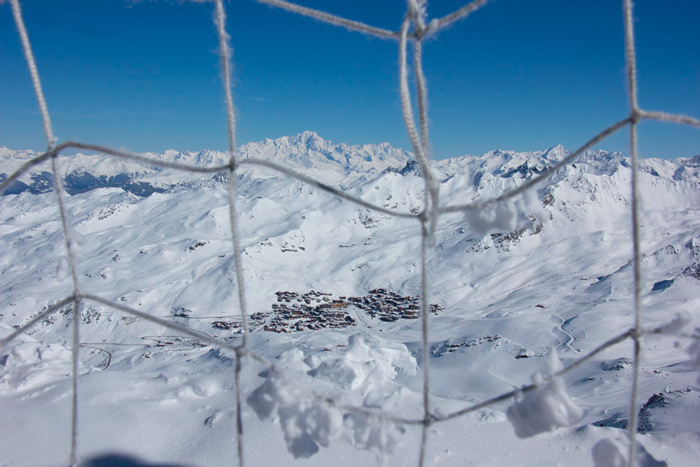
This overview of the Val Thorens ski area covers all the sectors - Plein Sud (3 Vallées), Péclet, Moraine, Grand Fond (Montée du Fond), Rosaël/Orelle, Caron, and Boismint.
Boismint is nice to visit first thing in the morning. Moraine has two medium easy blues. Plein Sud is great for afternoon sunshine and the party bar, the Folie Douce.
Some of the best snow can be found on the north-facing slopes in the Caron and Grand Fond sectors. Rosaël overlooks the Maurienne Valley, and has good views plus a different feel to the rest of the Val Thorens ski area.
Val Thorens-Orelle has 150km of pistes, compared with 600km for the whole 3 Valleys area.
Read an overview of the Val Thorens ski area here.
Plein Sud | Péclet | Moraine | Grand Fond | Rosaël | Caron | Boismint
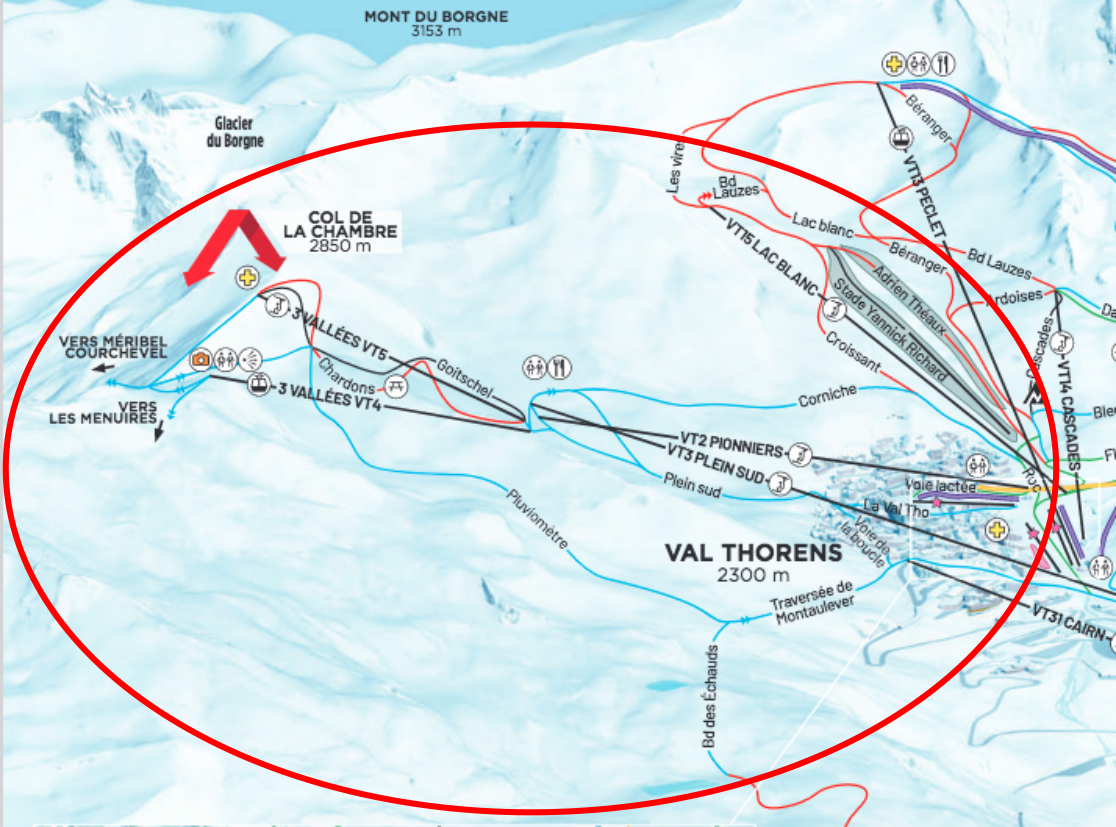
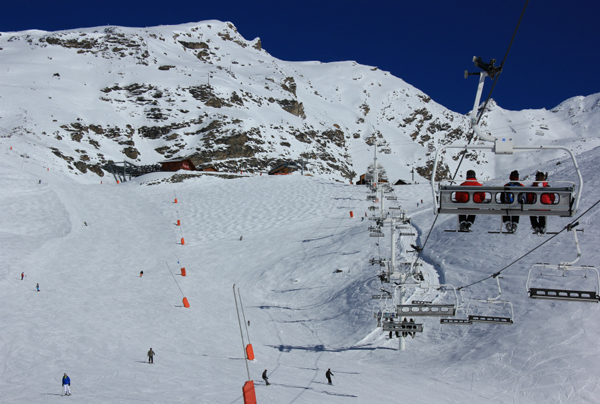
Plein Sud means south facing (literally, fully south). The Plein Sud piste, accessed by the Plein Sud and the Pionniers chairs, is wide, and has snow cannons all the way down. This means that it usually has good snow cover.
It's one of the most popular pistes in Val Thorens, too, because it gets sunshine for a large part of the day, and the Folie Douce - a café/bar with DJs and live music - sits at the top of the piste. It's also a route to Val Thorens from the other valleys.
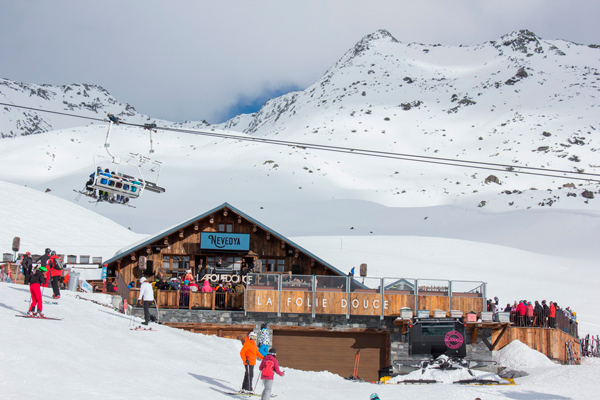
Towards the end of the day, Plein Sud can get very chopped up, especially in warm Spring weather. It is often busy.
In 2017, a new blue run was made to take some of the pressure off Plein Sud - Corniche.
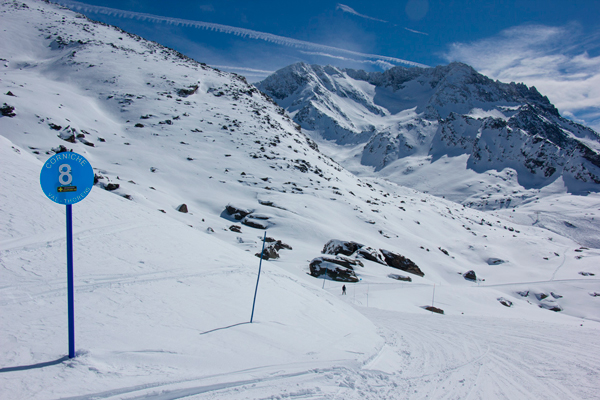
Corniche is classed as blue, but really it's more like a green followed by a red; it probably catches a few people out when they reach the steep part at the end.
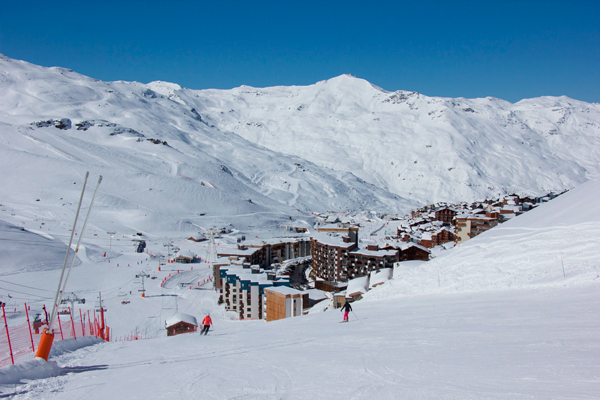
From late April onwards you can see marmots off to the side of Plein Sud, emerging from hibernation.
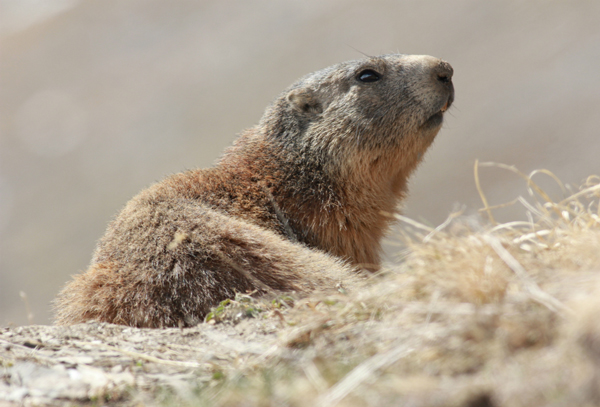
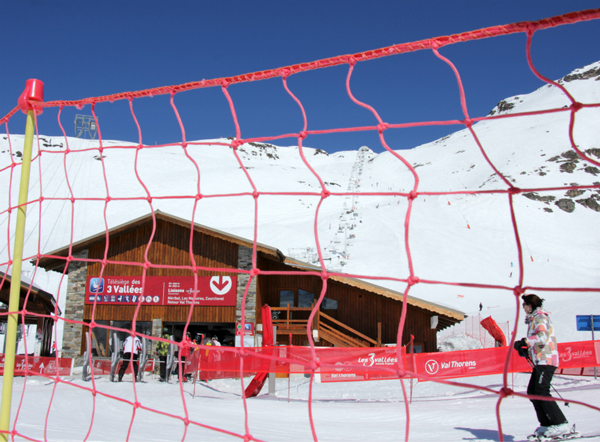
To get higher up in this sector, take the 3 Vallées chair or the fast Funitel des 3 Vallées (formerly Funitel Bouquetin).
These lifts give access to Méribel Mottaret and the 3 Valleys, on the far side of the ridge.
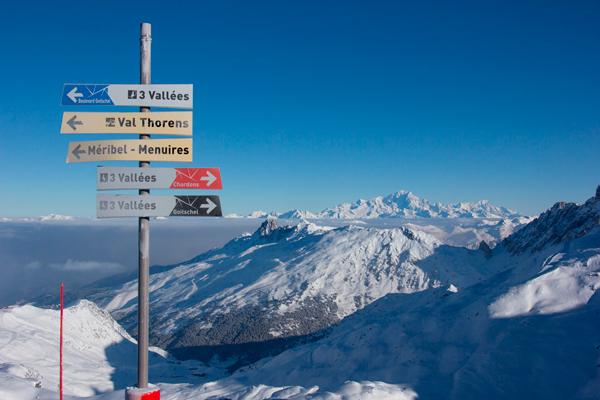
There are also various runs back towards Val Thorens on the near side of the ridge.

The main blue run is Pluviomètre, which takes you all the way back to the resort of Val Thorens.
Mont de la Chambre runs parallel to Pluviomètre. It isn't shown on the Val Thorens - Orelle piste map because it is technically part of the Les Menuires ski area, but you can ski it and get back to Val Thorens as long as you take a left turn at the crucial moment on the Traversée Montaulever.
There's a tricky red Chardons, which goes back to the bottom of the 3 Vallées lifts.
The black run Goitschel also takes you back to the bottom of the 3 Vallées lifts.
Goitschel is named after Marielle Goitschel, who together with her sister Christine was a French ski champion.
People sometimes say Goitschel is too easy to be a black run, and it can be when it has Winter snow and is newly pisted; on the other hand, towards the end of the day, or on warm Spring days when the snow is slushy, it is challenging.
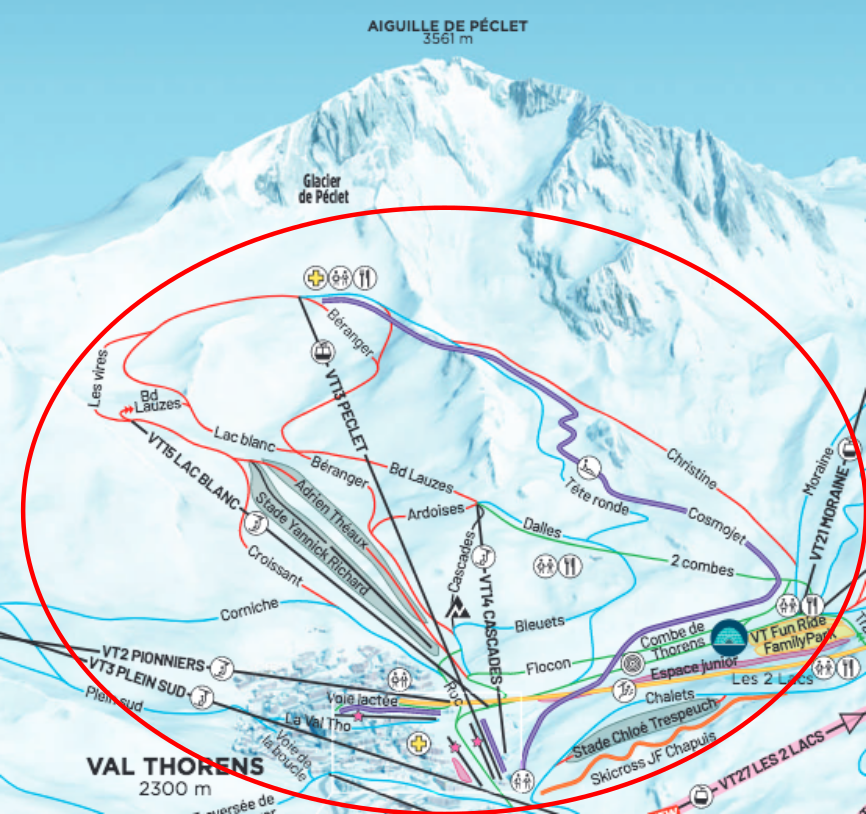
This sector of the ski area is broadly west facing, which means it gets the sun in the afternoon.
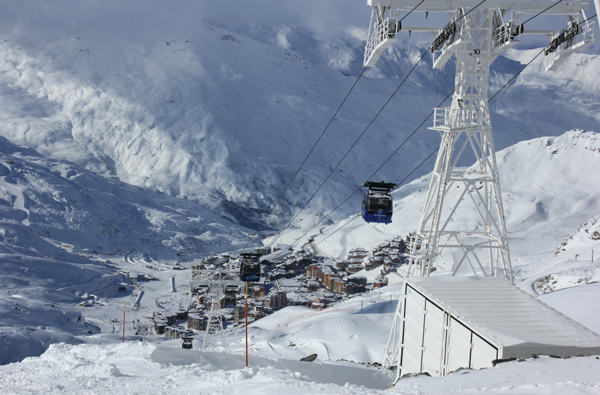
The Funitel Péclet is one of the resort's most important lifts, giving access to three red runs, as well as a blue and a black.
If you're skiing with children, they may resent having to take their skis off and carry them through the building at the bottom of the lift.
The journey takes 8 to 9 minutes, but you arrive at 3000m, with a view of the glacier and some great skiing/ boarding options.
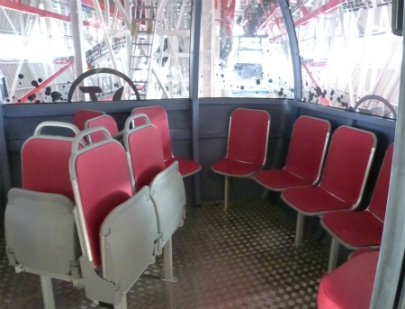
There's a restaurant, Les Aiguilles de Péclet, at the top of the Funitel.
Of the reds in Val Thorens, Lac Blanc is probably the easiest, and has reliably good snow - snow cannons mean that it almost always has a good base.
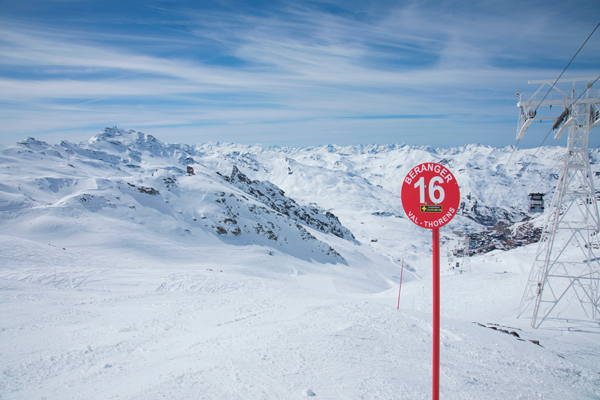
Béranger is quite steep. If you access it by turning right straight from the lift, there are often a few rocks at the very top.
There is now a second arm of Béranger, without rocks - go a little way along the track towards Tête Ronde, then turn right.
Béranger rejoins Lac Blanc part way down.
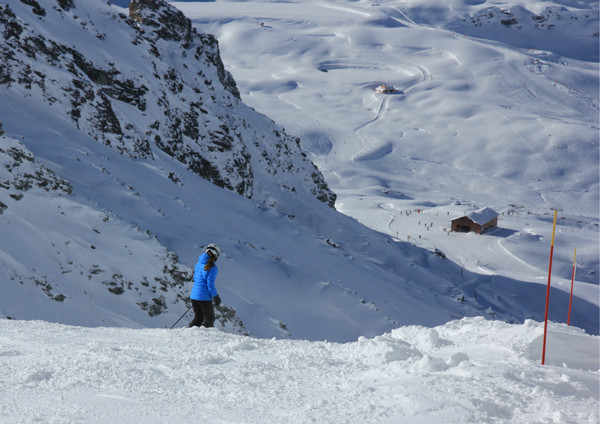
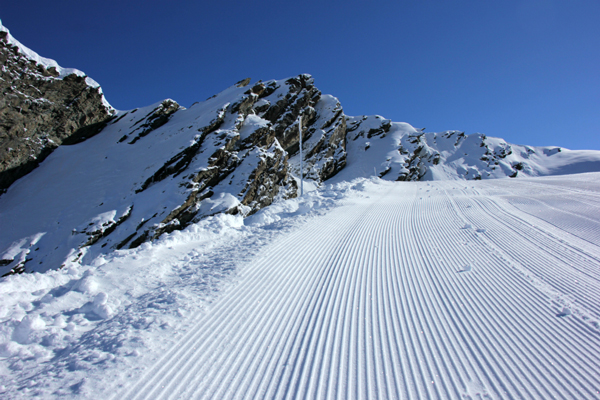
If you turn right at the top of the lift, a track leads you to the other side of a ridge, where it splits into two pistes: Tête Ronde (blue) to the right and Christine (red) to the left.
Tête Ronde is a favourite - not too difficult, with some great winding bends on the lower half. It can be skied fast if it's not busy. (Be careful, though, and never put other people in danger).
Tête Ronde joins Dalles at the level of the Chalet de la Marine.
Christine is named after French ski champion Christine Goitschel. It is about average difficulty for a red, with the steepest part two thirds of the way down.
It brings you out close to the bottom of the Moraine chair.
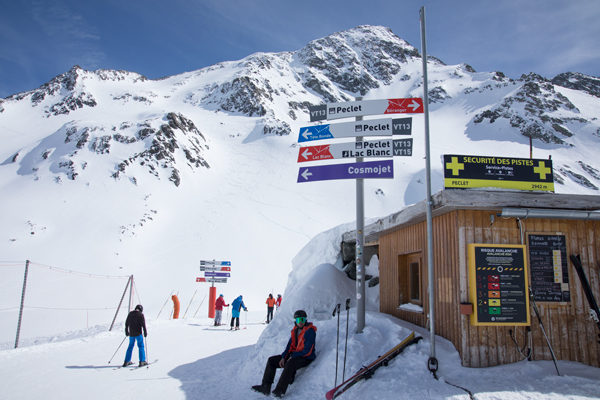
There used to be another option from the top of the Funitel Péclet - to ski down to the Glacier chair. It took you up to a black run, also called Glacier.
This area is where the Summer skiing used to be. At one time there was a chairlift for Summer skiing, called 3300.
Much of the glacier has melted, and both chairlifts have now been removed.
People do still walk up Glacier with touring skis and ski down where the Glacier piste used to be.
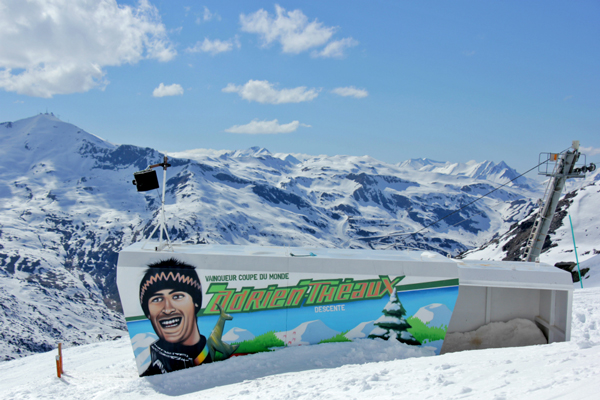
The Lac Blanc chair takes you from Rond-Point des Pistes and goes up over the slalom stadium.
Stade Yannick Richard is the main slalom stadium run. When it's not being used for racing or training, you can ski it.
The same applies to the other arm of the slalom stadium, Adrien Théaux.
There's also a red run that avoids the stadium runs - Croissant.
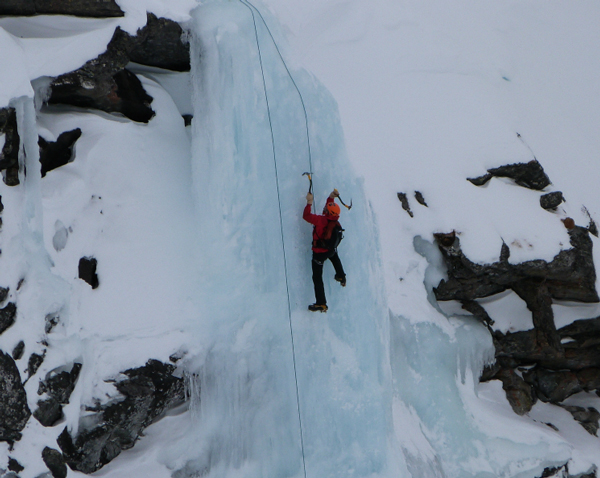
Lower down in this sector is a black piste called Cascades, under the Cascades chairlift (named after the ice fall to your right as you go up, see photo above). It's the resort's classic mogul run.
Eric Berthon, the first moguls World Champion in 1986, used to train here. He asked the resort never to piste Cascades so it would always have great bumps. That tradition continues.
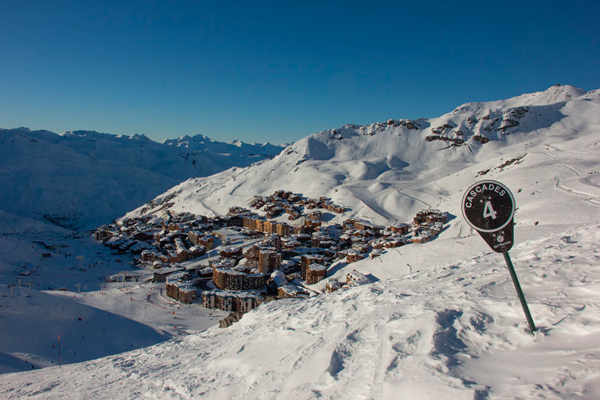
Accessed from the 2 Lacs lift are a blue run called Chalets, and the other slalom stadium which is named after Snowboard Cross racer Chloé Trespeuch.
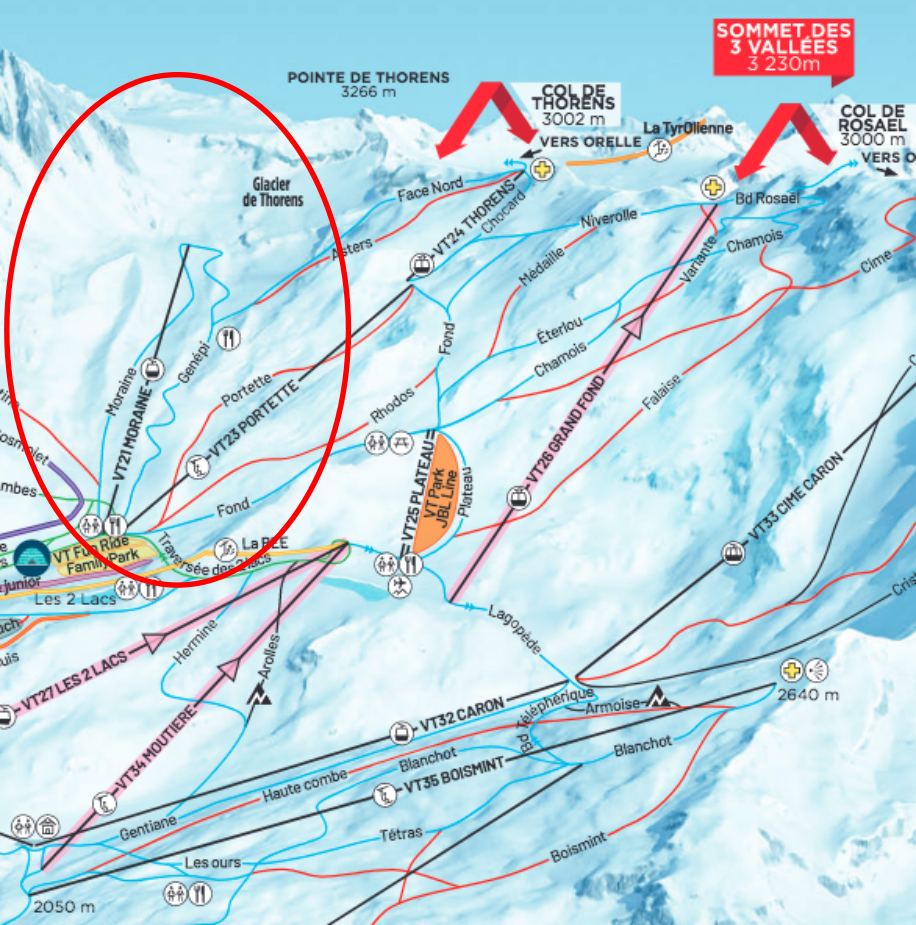
Val Thorens lumps Moraine together with Montée du Fond as a single sector it calls Thorens. I've kept them separate.
The Moraine lift and piste are named after a geographical feature, a glacial moraine on which the lift's pylons stand. A moraine is a glacially-formed accumulation of unconsolidated debris (soil and rock). This one appears to be a lateral moraine.
In Winter 2017-18, a new telecabine replaced the old chairlift.
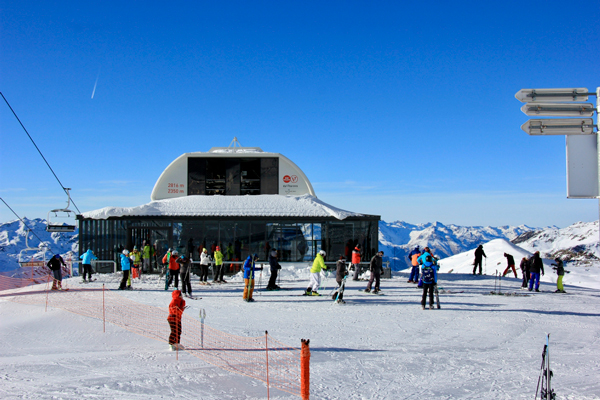
These slopes face north west, which means the snow is usually in good condition. On the other hand, they stay in the shadow for a large part of the day, so it can be cold.
The area is not recommended when the wind blows from the south east. A south easterly is the worst wind for Val Thorens anyway, because it is usually dry so it doesn't bring snow. Worse, it blows the snow that's already lying on the slopes away down the Belleville valley.
Moraine is one of the sectors worst-affected by a south easterly Foehn, as the wind is funnelled into the little valley, and howls down it.
Riding the Moraine chairlift in these conditions was no fun, but an indoor telecabine lift is an improvement.
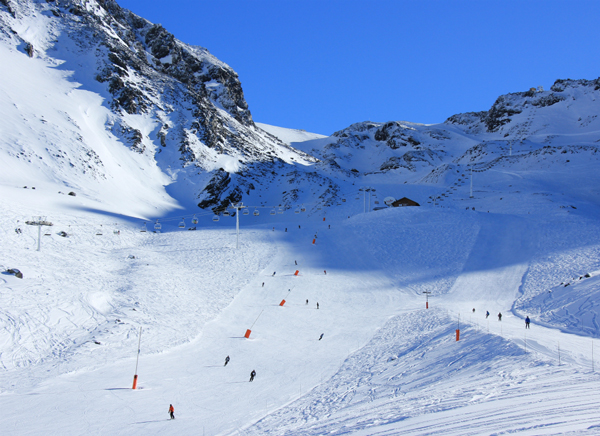
In good weather, the Moraine piste, a blue run with snow cannons, is a favourite for early intermediates and anyone finding their ski legs at the start of the week; it's wide and not too steep.
Out-of-control skiers going too fast for their ability can make it feel dangerous at times, though.
Moraine's sister run, Génépi (no snow cannons), is perhaps marginally more difficult.
The Caribou restaurant is part way down Génépi.
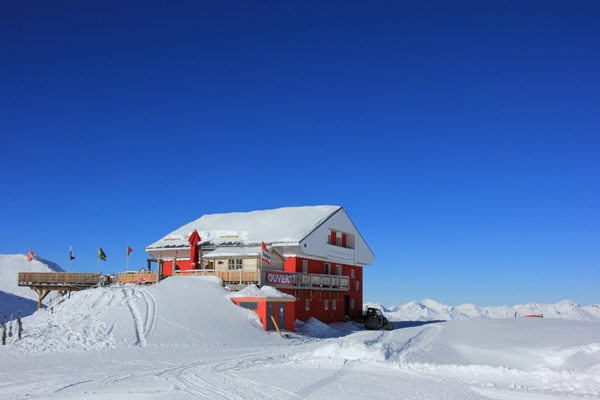
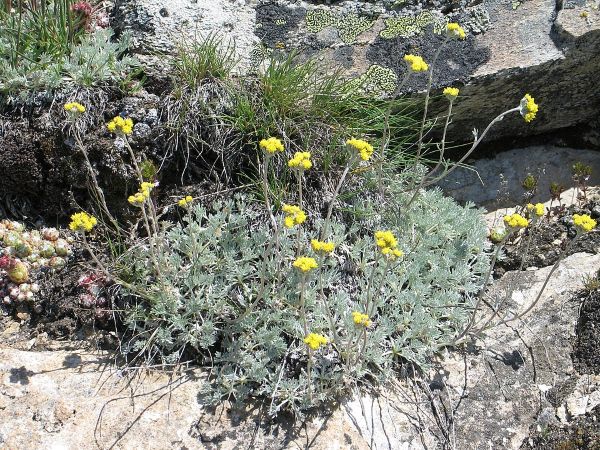
Génépi is an Alpine flower, which is used to flavour a liqueur of the same name. The liqueur is similar to absinthe and Chartreuse, and is a taste that can be acquired if the individual concerned is sufficiently determined and dedicated.
Génépi is based on vodka or pure grain alcohol, with chopped, dried génépi flowers added for taste, aroma and colour.
This flower is from the genus Artemisia, commonly called wormwood in English. It is native to the mountainous areas of France, Spain, Italy and Switzerland, and grows high up in the Belleville valley. It can be harvested in July and August - or you can buy it in tea-bag like sachets.
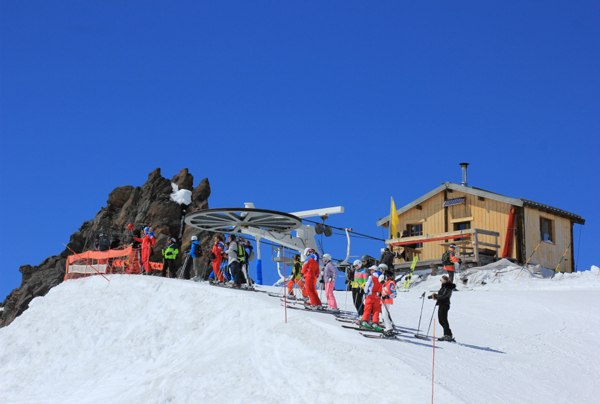
The Col chairlift was the last of the non-detachable chairlifts in Val Thorens - the type that bangs the back of your legs because it doesn't slow down at the departure point, then travels very slowly to the top.
In Winter 2021-22, the old Col chair was removed and not been replaced. It looks as though a new lift called Face Nord will be added in advance of the 2025-26 Winter season, but it won't go to the same arrival point as Col.
On a fine day, the view from the top of Col was unbeatable.
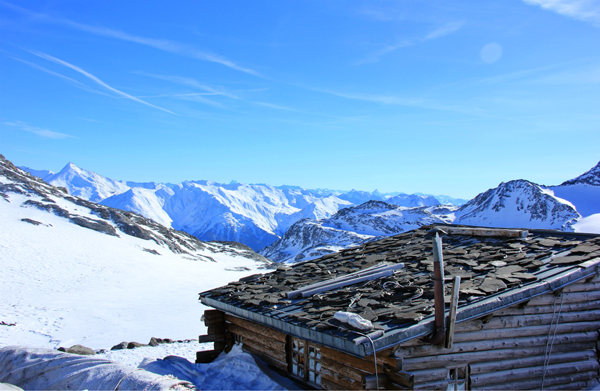
A new gondola called Face Nord is being added in 2025-26 - details to follow.
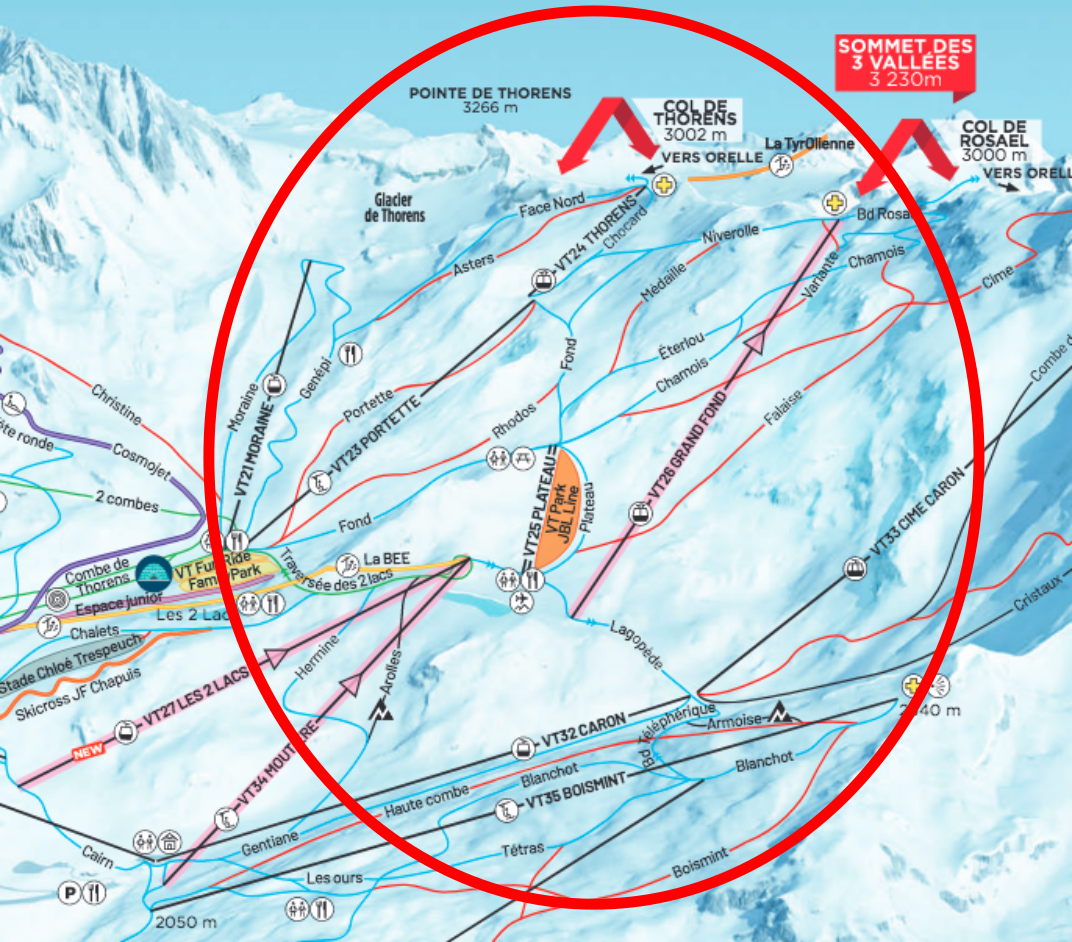
With north-facing slopes, the Fond sector usually has excellent skiing. It can be very chilly at the top when the weather is cold.
Around the same level as the departure point of the Moraine chair is another chairlift, Portette.
From the top of the lift you can take a red, Portette, under the chairlift, or traverse to the right on Fond, towards Plateau.
Another option from the top of Plateau is to go higher up on the Funitel de Thorens.
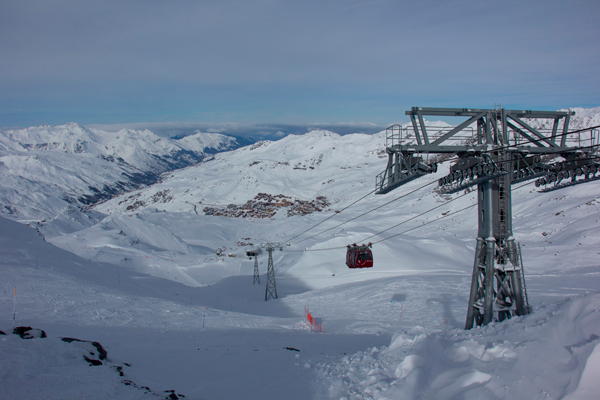
The Funitel de Thorens has two lots of 2 x 33-person cabins, and whisks you from 2795m up to 3003m in a jiffy. It cost €6.5 million to buy and install in 2011.
The top of the Funitel de Thorens is the arrival point of the Orelle zipwire.
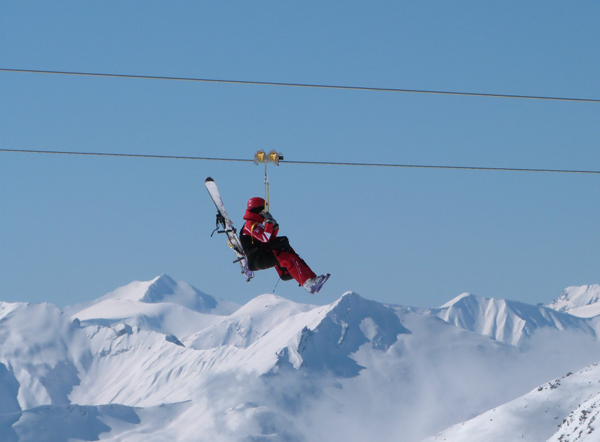
The Orelle zipwire (La Tyrolienne) was the first zipwire in Val Thorens when it opened in February 2014.
It runs from the top of the Bouchet chair in Orelle to the top of the Funitel de Thorens.
Four pistes are accessible from the top of the Funitel de Thorens. There's Asters (red) and Face Nord (blue) which both link to Génépi, in the Moraine sector.
An aster is a flower, and the Aster alpinus has lilac petals and a yellow centre.
Chocard is a blue that runs under the Funitel de Thorens back to its departure point.
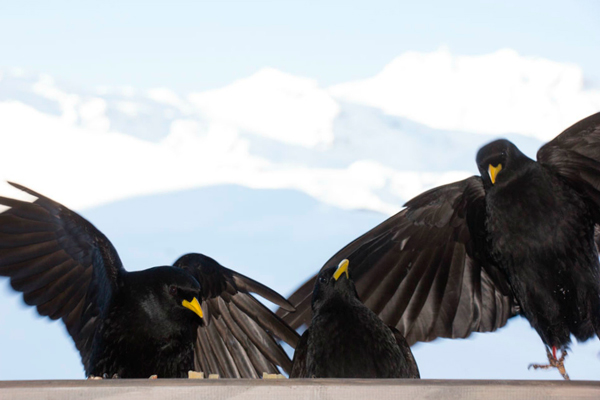
A 'chocard' is the most common type of crow seen in Val Thorens. It has red legs and a yellow beak, and is also known locally as a 'choucas'; the name in English is Alpine chough.
Lory is a blue which takes you into Orelle.
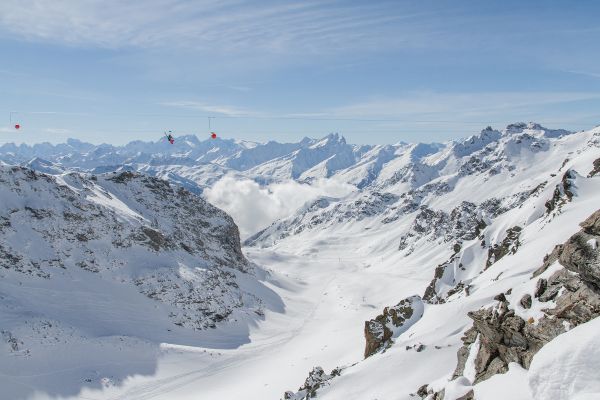
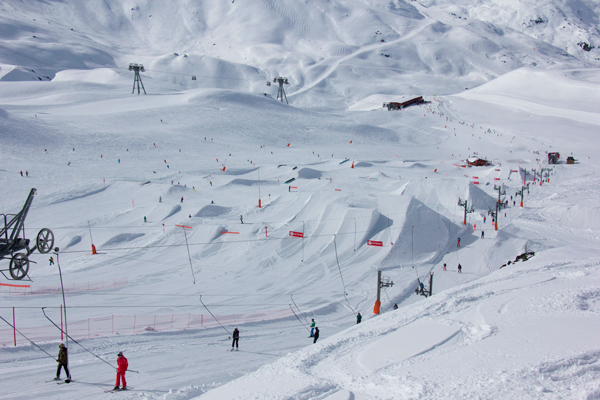
If you turn right from the top of Portette, you're on Fond. You can take it all the way back to resort, of fork right part way down onto the red, Rhodos. Like most reds, Rhodos is groomed every other night, and if you ski it the next morning when it's in perfect condition it is brilliant.
A little further down Fond, there's a left turn to a nice blue run called Plateau by the snowpark.
To go back to the top of Plateau and the snowpark, there are two parallel draglifts.
The Moutière restaurant is close to the bottom of the Plateau drags.
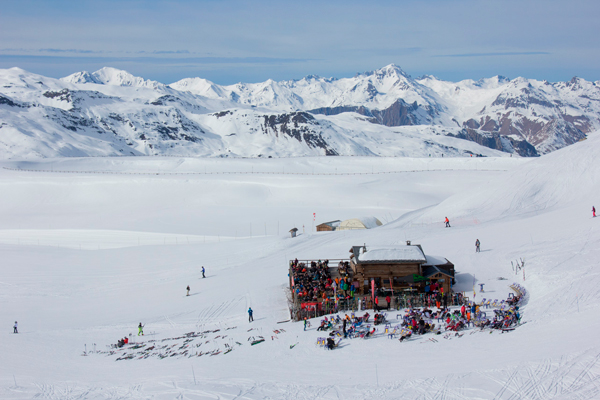
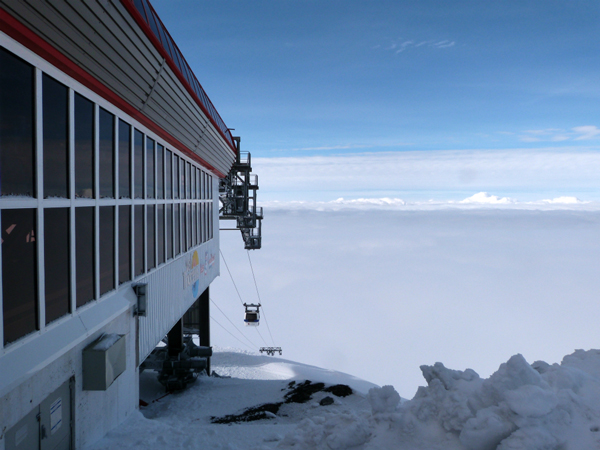
Continue past the bottom of the Plateau draglifts and you reach the Funitel Grand Fond.
It's a fast funitel lift (no seats), and from the top (3000m) if you look to the north, you'll see Mont Blanc. You can also look south east towards the Maurienne valley.
The easiest run down is Niverolle (then take Fond to get back to resort).
A niverolle is a snow finch - not a true finch, but a type of sparrow.
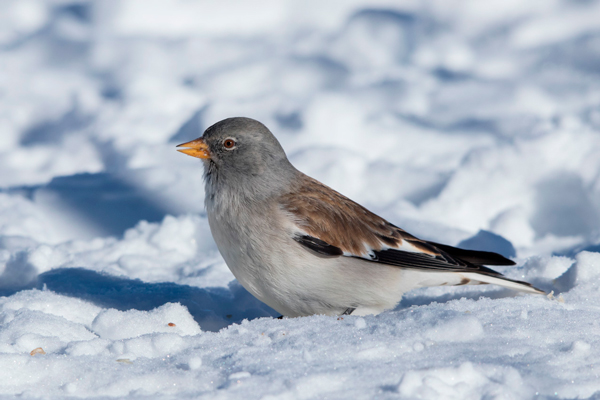
The reds are Variante and Médaille, which tend to be pisted on alternate nights - if one hasn't been groomed, the other has.
From the top of Grand Fond you can also take a track to the right towards Rosaël. It involves a bit of skating.
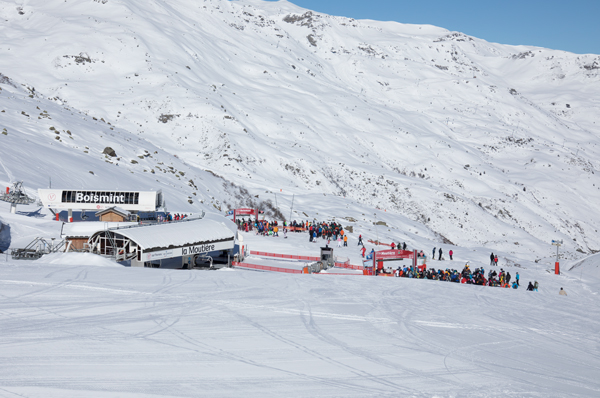
La Moutière is one of the lowest chairs in Val Thorens. It gets busy at times - for example, 11.30 because ski lessons finish at 12 - and once you're down there there's no alternative for getting back to resort. It tends to be a little unreliable, occasionally stopping without warning.
Turn left at the top and you have access to a blue, Hermine, which takes you back to the bottom of the chair, and to a green, 2 Lacs, which is a return route to resort.
Hermine means stoat.
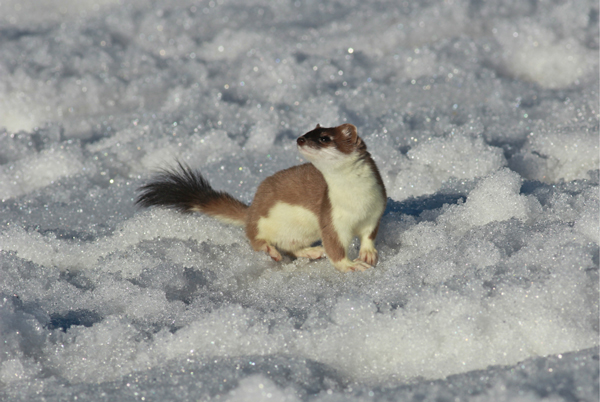
Also from the top of La Moutière you can get to the area which has Les Chalets (a blue run), the Skicross J F Chapuis, and the second slalom stadium (Stade Chloe Trespeuch).
Further, La Moutière gives you access to the Plateau area (see above) and the top of the Bee zipwire.
Under the Moutière chair, there's Arolles, a black that's rarely pisted so that it becomes a bumps run.
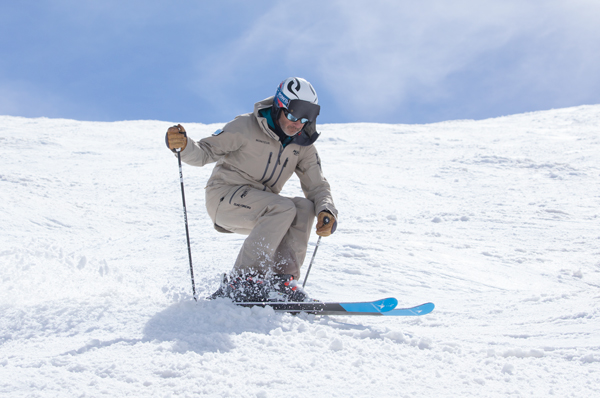
Arolles means Swiss pines, or Arolla pines.
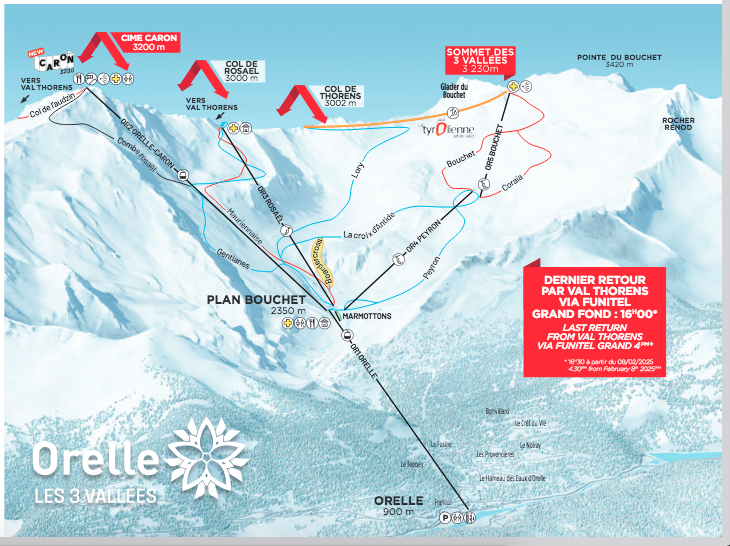
Rosaël is also known as Orelle (which is the little town down in the Maurienne valley), and the Fourth Valley.
The main way over is from the top of the Grand Fond lift and the Col de Rosaël. The other access points are Funitel de Thorens/Col de Thorens and Cime de Caron
Rosaël has a different feel to the rest of Val Thorens, and a different view, looking towards the Maurienne valley and resorts further south including Les Deux Alpes.
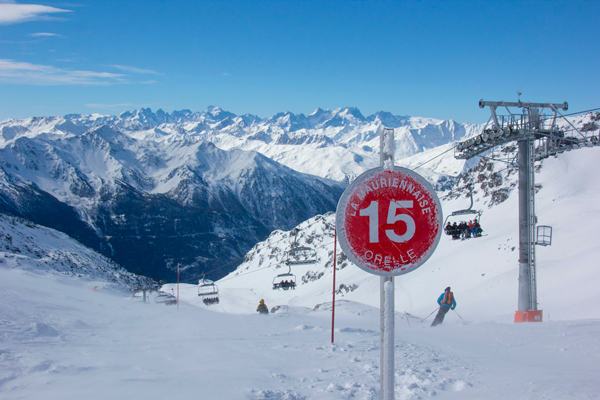
It's run by a separate lift company (the STOR), so it's technically a different ski area. It is, though, covered by a Val Thorens pass (and, of course, a Belleville or 3 Valleys pass).
It gets a lot of sunshine and the pistes are usually well groomed; it can be a little quieter than the rest of Val Thorens.
Pierre Lory is an easy blue run from the Funitel de Thorens into Orelle. There are some flat sections lower down.
Combe Rosaël is the black into Orelle from the Cime de Caron. It is steep and difficult.
The main run down this side, Mauriennaise, is a joy to ski or board.
A blue run, Gentianes (not to be confused with Gentiane in Val Thorens), is more of a path than a piste, snaking around Mauriennaise, and crossing it from time to time.
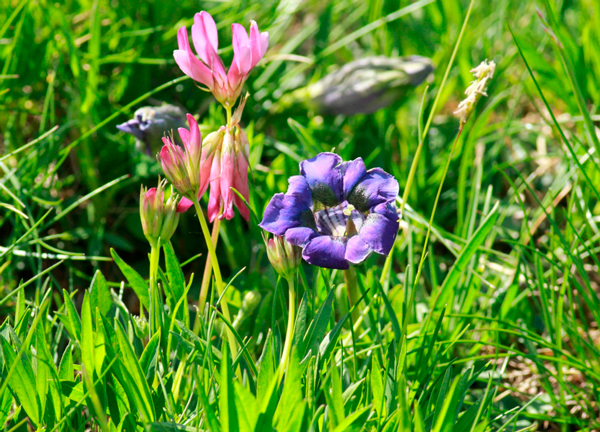
There's a restaurant, the Chalet Chinal Donat, at the bottom of Mauriennaise.
From the restaurant, you can either take the Rosaël chairlift back towards the Val Thorens side, head up the Peyron chair to explore this sector further, or go up the Orelle-Caron bubble to the top of the Cime de Caron.
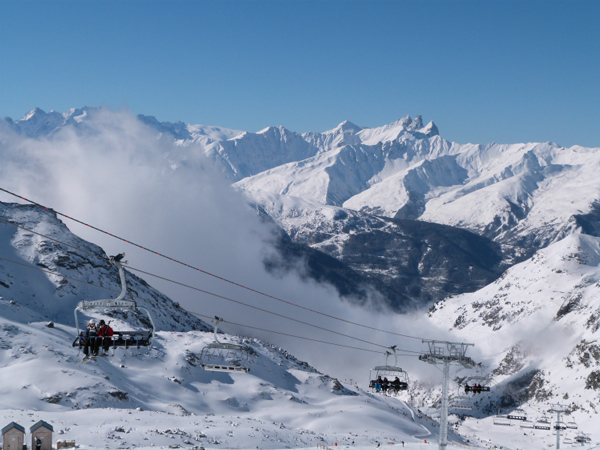
The blue under the Peyron chair, also called Peyron, is easy-peasy and very pleasant.
If you go higher up from the top of Peyron, on the Bouchet chair (slow), you're on the highest lift in the 3 Valleys. Its summit is at 3230m.
Beware that the red down, Coraia, is steep at the top, and can be difficult in poor conditions. A little further down, there's a split between Coraia and another red, Bouchet.
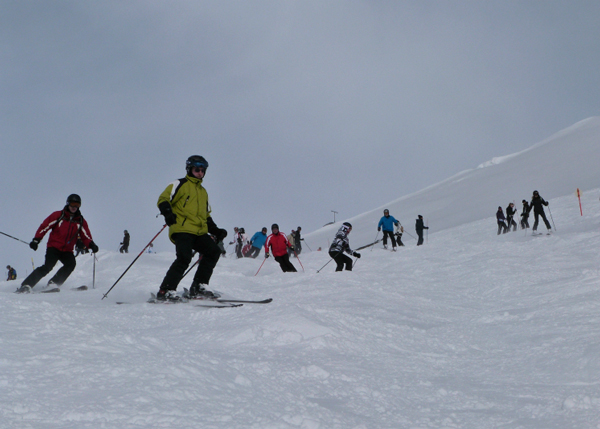
The Orelle zipwire, which opened in February 2014, goes from the top of the Bouchet chair to the top of the Funitel de Thorens, a distance of 1300m (€50).
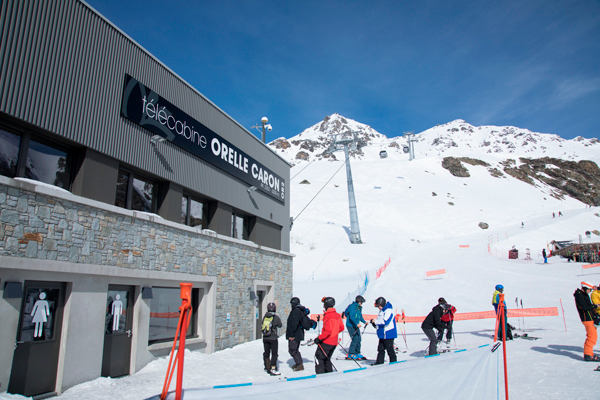
A bubble or gondola brings people up from Orelle.
New in 2021-22, you can take the Orelle-Cime Caron bubble to the top of the Cime de Caron at 3,200m.
At the lift station at the bottom of Orelle-Cime Caron, there are WCs with drinking water.
The return to Val Thorens from the top of the Rosaël chair can be a bit tricky, although they have made it easier in recent years by creating two blue runs, Chamois and Eterlou, as an alternative to the red, Falaise.
A Chamois is a goat-antelope native to the Alps. An éterlou is a male bouquetin (ibex, or mountain goat) in its second year. Falaise means rocky cliff.
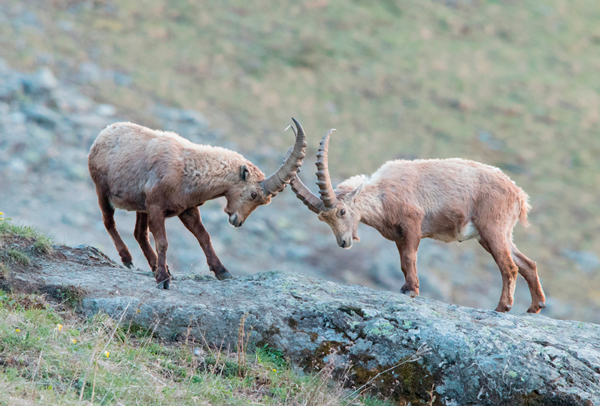
You can also return to Val Thorens via the Cime de Caron.
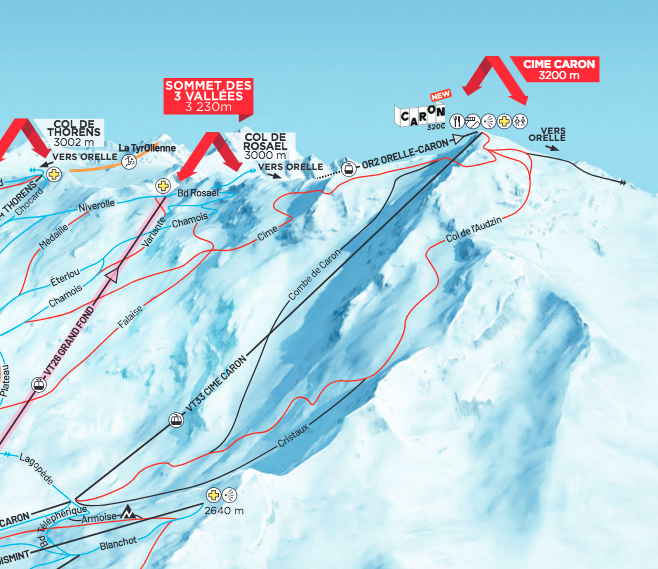
The Cime de Caron is the jewel in Val Thorens' crown.
The Caron cable car was the largest in the world when it was built in 1982, and it can still thrill visitors today.
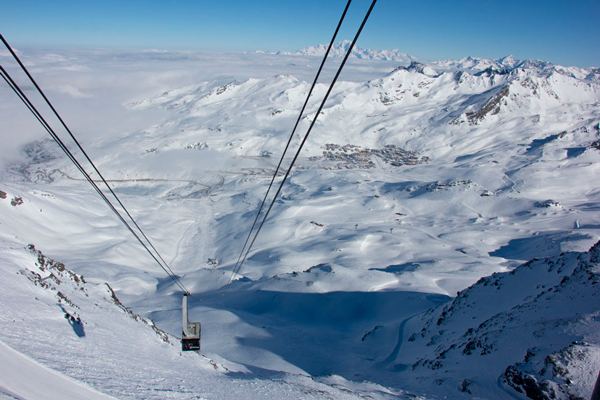
Access to the cable car is via the Caron bubble, or a short ski from the top of the 2 Lacs, Moutière or Boismint lifts.
There can be queues for the cable car, but it takes 150 people at a time, and it's well worth going up for the view alone on a fine day.
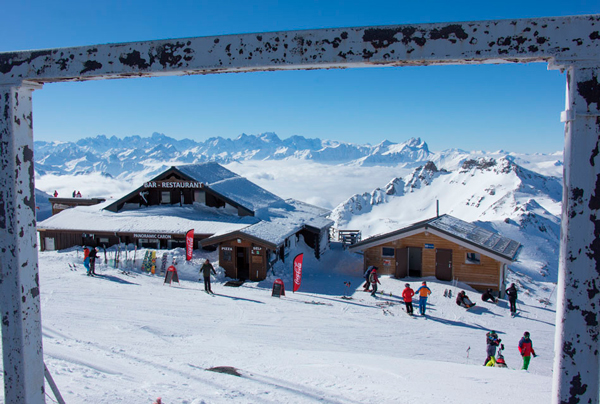
You arrive at an altitude of 3200m.
It used to be possible to walk up to a viewpoint, but that's only open in Summer now. Instead, there is a slightly disappointing plastic tunnel that leads to an indoor viewpoint - called a panoramic rotonda.
There was a café at the top with a panoramic terrace, but it has been displaced by the arrival station of the Orelle-Caron telecabine.
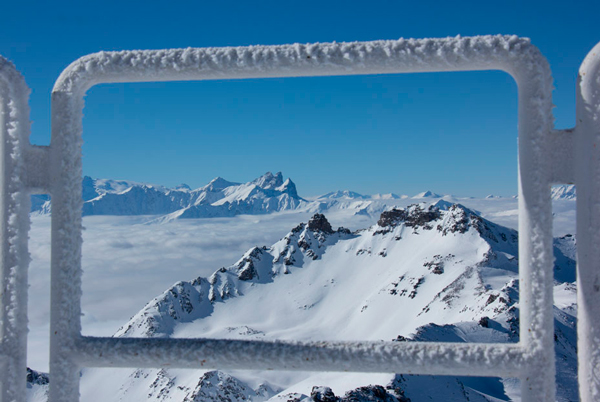
From Winter 2024-25, there is a new restaurant, wine bar and relaxation area, with a panoramic roof terrace. It is called Caron 3200. There are WCs on the ground floor.
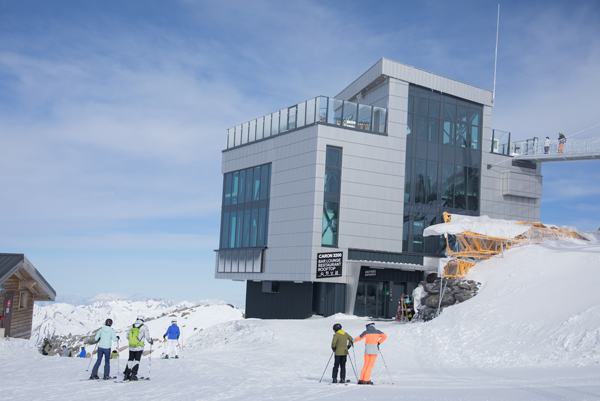
The architecture of Caron 3200 would be perfect if it was part of an airport terminal building. I'm not convinced it adds any value to what is supposed to be a beautiful mountain summit.
Since 2021-22, you can also access the Cime de Caron via the Orelle-Caron telecabine.
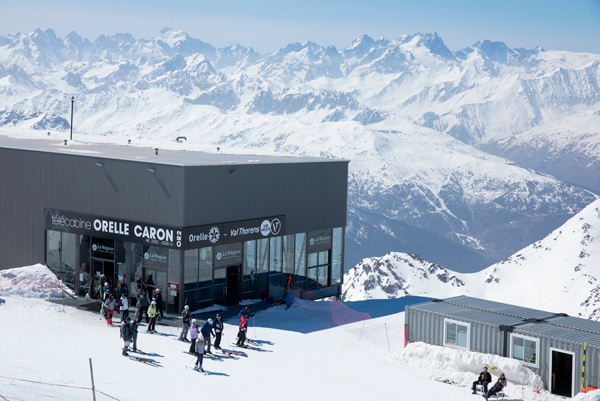
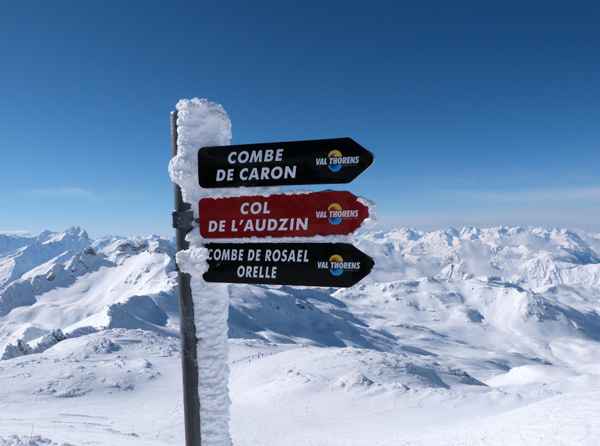
All the runs down from the Cime de Caron are quite challenging - but you can go back down in the cable car if you wish, and it's open to pedestrians because there are lifts you can take to and from the resort of Val Thorens.
The main red is Col de l'Audzin. Part way down, there's an option to turn left onto a black, Les Cristaux, which often has moguls.
The main black is Combe de Caron. It involves a path followed by a couple of steep sections, before opening out then rejoining Col de l'Audzin.
A relative newcomer, the red Cime is probably the easiest piste from the Cime de Caron. It takes you to Chamois piste.
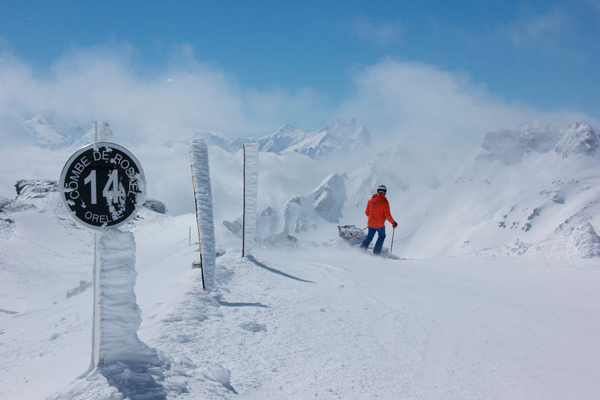
There's also a black off the back towards Rosaël, called Combe de Rosaël. It's usually difficult, and sometimes rocky in places.

A number of Val Thorens off piste itineraries begin from the top of the Caron, including the Combe sans Nom.
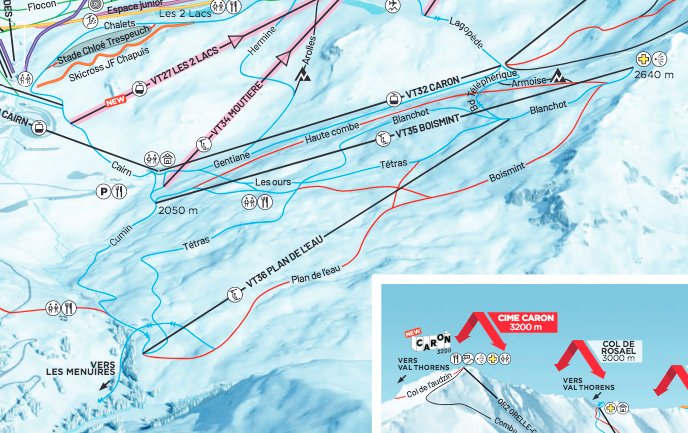
I've kept Boismint as a separate sector, but as far as Val Thorens is concerned it is now part of the Caron sector.
Boismint is north east facing and gets the sun quite early in the morning, so it is worth a visit first thing.
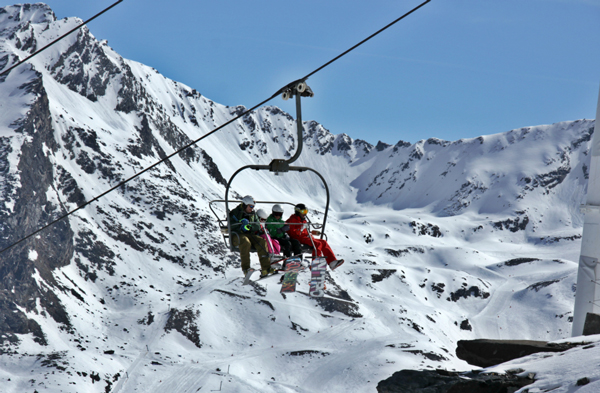
Turn right from the top of the Boismint chair for the Blanchot, a nice blue with snow cannons.
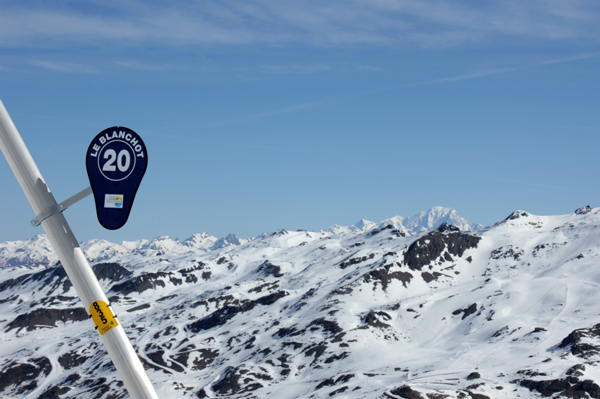
Extend the trip by taking Tétras all the way to the bottom of the Plan de l'Eau chair.
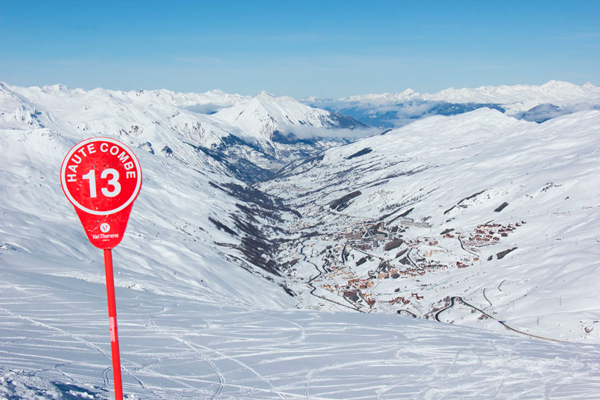
The reds from the top of the Boismint chair are Haute Combe to the left, and Boismint to the right. (There's also a very short unpisted black called Armoise).
Haute Combe is a standard red run in terms of steepness and difficulty.
Boismint looks gentle at the start, but it has one very steep section part way down. Boismint links to another red, Plan de l'Eau, if you want to go all the way down to the chair of the same name.
The bottom of the Plan de l'Eau chair marks the lowest point of the Val Thorens ski area (literally, not metaphorically) at 1800m.
There are good views down the Belleville Valley from these red runs.
Blanchot is the local word for a lièvre variable, or mountain hare; tétras is a black grouse; a plan de l'eau is a lake or pond.
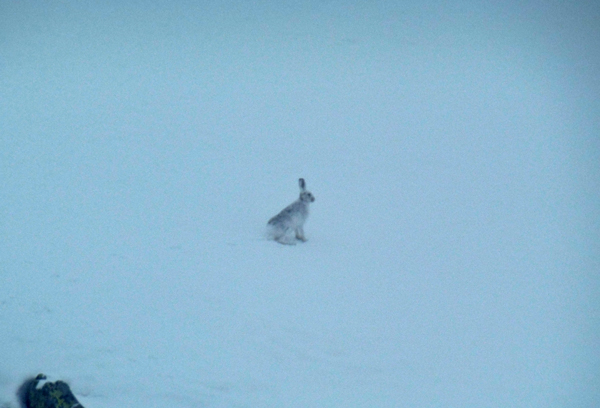
There are also mountain hares in the UK.
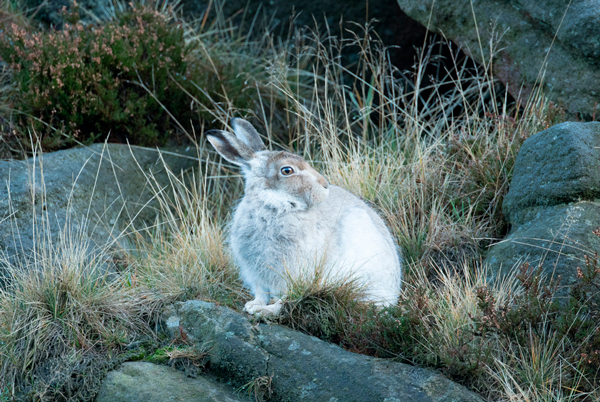
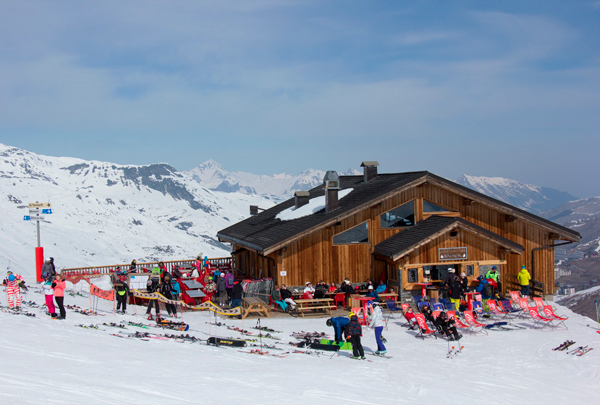
There's a cafe at the junction of Blanchot and Tétras - the Chalet des 2 Ours.
Have a great time exploring the Val Thorens ski area.

Skiing Made Easy is a Kindle ebook and paperback. It's a practical guide to learning to ski, based on many happy seasons of ski teaching in Val Thorens.
'This is the book I wish I'd had when I started skiing' - Amazon reviewer.
Read more about Skiing Made Easy.
Buy the paperback direct or on Amazon. Buy the Kindle ebook.

Skiing Made Easier is the follow-up to Skiing Made Easy, and covers technique beyond basic parallel turns - carving, short turns, bumps and off piste.
Read more about Skiing Made Easier.
Buy the paperback direct or on Amazon. Buy the Kindle ebook (affiliate links).
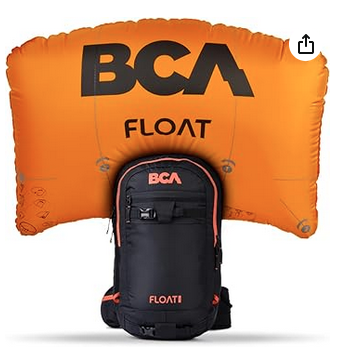
BCA Float 22 Avalanche Airbag backpack features a 150 litre airbag for increased buoyancy and head and neck protection in the event of being caught in an avalanche.
£611.99 at the time of writing (affiliate link).